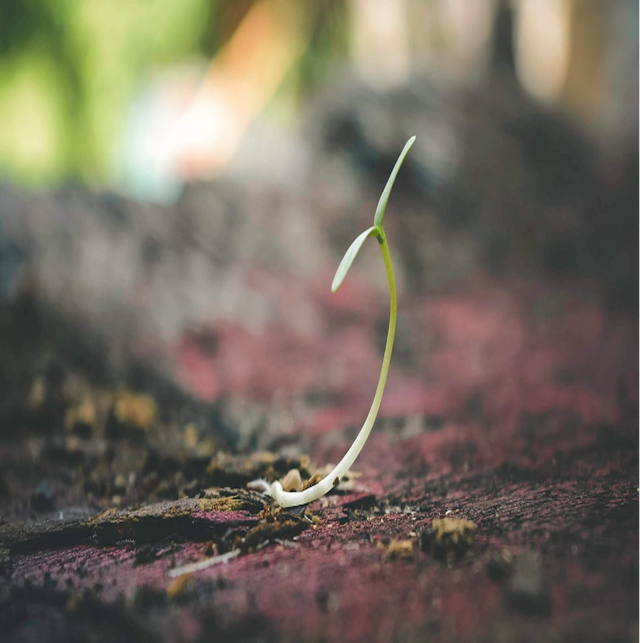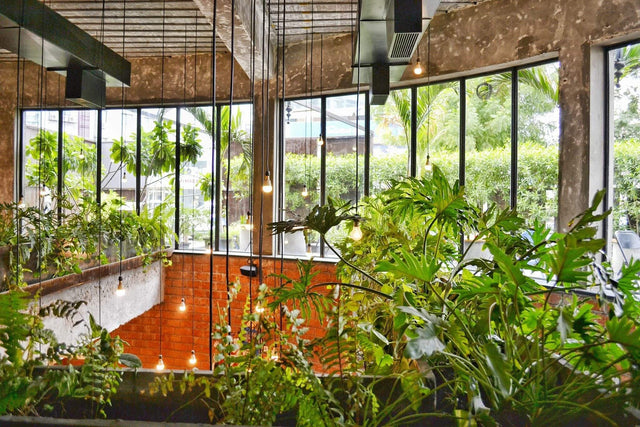
If you’ve ever wondered if your plants may be at risk of one of the many problems that healthy plants face such as browning, yellowing, burning, thinning, leaf loss, and stem weakness.
You’re not alone, many plant parents have the common problem of managing long-lasting plant happiness, especially if you lack south-facing windows and your plants are neglected without natural sunlight.
Luckily, many happy plant parents have taken to indoor grow lights to solve this issue by providing full spectrum light to your chosen plants from anywhere.
However, a common concern for plant parents choosing a grow light is often which one to get. While both popular LED and fluorescent lights have their perks, you should know some important things before you rush off and grab your personal plant protector.
In this guide, we discuss the benefits and downfalls of LED and fluorescent grow lights. So read along and we’ll get to grips with the differences, and answer burning questions like which one is right for your green indoor garden? And which one will prevent your plants from the most harm? Let’s find out
Intensity and Light Spectrum
The first thing you should think about when choosing a grow light is the type of plants you’re caring for. For example, plants like ferns need only a small amount of light so picking a fluorescent light may not be a bad choice upon first thought, however, there are other considerations we will touch on later. For the majority of other plants that require a lot of light, LED grow lights may be your best friend for making the most out of your indoor green garden. This Is because LEDs emit full-spectrum light efficiently which means your plants will get the light intensity needed to allow for the blossoming and nourishment of your leafy friends. Light guide here.
Other considerations
Understanding the benefits of full-spectrum grow lights is quite simple, they closely mimic natural sunlight and can help to promote different stages of growth for healthy and long-lasting green leaves. This is why choosing full-spectrum lights for plants who are more “light needy” should enjoy grow lights that emit the full spectrum of light. In deciding the best option for your plants, you should also consider the amount of space you have, typically LED lights present themselves in a classic and tidy bulb aesthetic that can be versatile for any space you want to put your green companions, on the other hand fluorescent light can be quite bulky and is typically used if you prefer softer light and potentially could be useful for growing seedlings and young plants.
Energy efficiency (LED vs Fluorescent)
So you’ve been thinking about getting some grow lights, but you're wondering if your new grow lights will cause your energy bill to go sky-high. Here we’ll give you everything you need to know about LED and fluorescent grow lights and how they can enhance your homes beautiful space without necessarily compromising the day-to-day running of your indoor green garden.
LEDs are highly efficient, consuming less power and offering more light per watt than fluorescents. It’s for this reason that LED lights are a great cost-effective option to save on your energy consumption.
Things to think about with LED grow lights:
- Wattage: look for low wattage and high output
- Efficacy: look for a light with a high ratio of PPF per watt, if the grow light you are looking at doesnt provide information on PPF the next best metric to look at is lumens per watt
- Heat output: if you get efficient lights, they should emit low heat which will allow for healthy plant growth without burning strong leaves
- Longevity: long-lasting lights ensure great durability and remove the need for frequent replacements, LED lights often have a lifespan of 30,000-50,000 hours.
Fluorescent grow lights are a lot less efficient than LEDs, they consume more energy for the same light output. However, their lower initial cost can be appealing to budget-conscious gardeners
Things to think about with Fluorescent grow lights:
- Type: despite fluorescents being less efficient, among the ones out there like T5, T8, and T12, T5 may be the best choice if you want a higher output similar to that an LED typically emits.
- Efficacy: Same with LEDs, aim for a high ratio of PPF per watt, or lumens per watt
- Size & output: The size of the tubes needs to be right, if it covers too much space you may run the risk of wasting a lot of space
- Lifespan: Typically, fluorescents don’t last as long as LED lights and you may run into overspending on multiple fluorescents, causing more pain than necessary
- Plant needs: ensure your choice of grow light is suitable, efficient light also means the right light for your specific plant needs.
Overall. LEDs are the better option in terms of energy efficiency, fluorescents can cost less initially, but if you are looking for a longer-lasting solution to plant care and health, LEDs tend to last much longer so you won't have to faff about with replacing them.

Installation (which is easier?)
When setting up an indoor garden, understanding the installation and flexibility of your lighting options is crucial. So, which type of grow lights are best? Well…LED grow lights shine in user-friendliness, often featuring easy mounting and adjustability in height and angle, catering to the changing needs of growing plants. Design-wise, LEDs allow for effortless expansion, making them ideal for evolving garden layouts.
On the other hand, fluorescent lights, while straightforward in basic setups, offer less adaptability. They tend to be bulkier, which can be a challenge in space-constrained environments, and generally lack the modular flexibility of LEDs. As a result, LEDs may be the wiser choice if you like versatility and the choice to diversify your indoor tropical paradise garden designs. Fluorescents might suit more static setups with ample space. Ultimately, the decision hinges on the gardener's spatial constraints and desire for customization in their interior plant paradise. For a guide on pros and cons go here.
Conclusion
In conclusion, there are merits to both LED and fluorescent grow lights. If you looking for a flexible, and quality grow light that will really test the time of your interior green garden, you should opt for LEDs to avoid the faff of replacements that are common with fluorescent grow lights. While fluorescents may hold some use to if you’re planning on growing seedlings and young plants, you should read further on this topic to ensure the proper plant care procedure and avoid common issues such as heat stress and poor growth.
P.S. We’ve all had a regretful trip to the plant doctor at one point or another
Learn more:
Complete grow lights guide for beginners
Grow lights that work:
Plant light tools we recommend:
Find similar articles:
Lighting Principles
